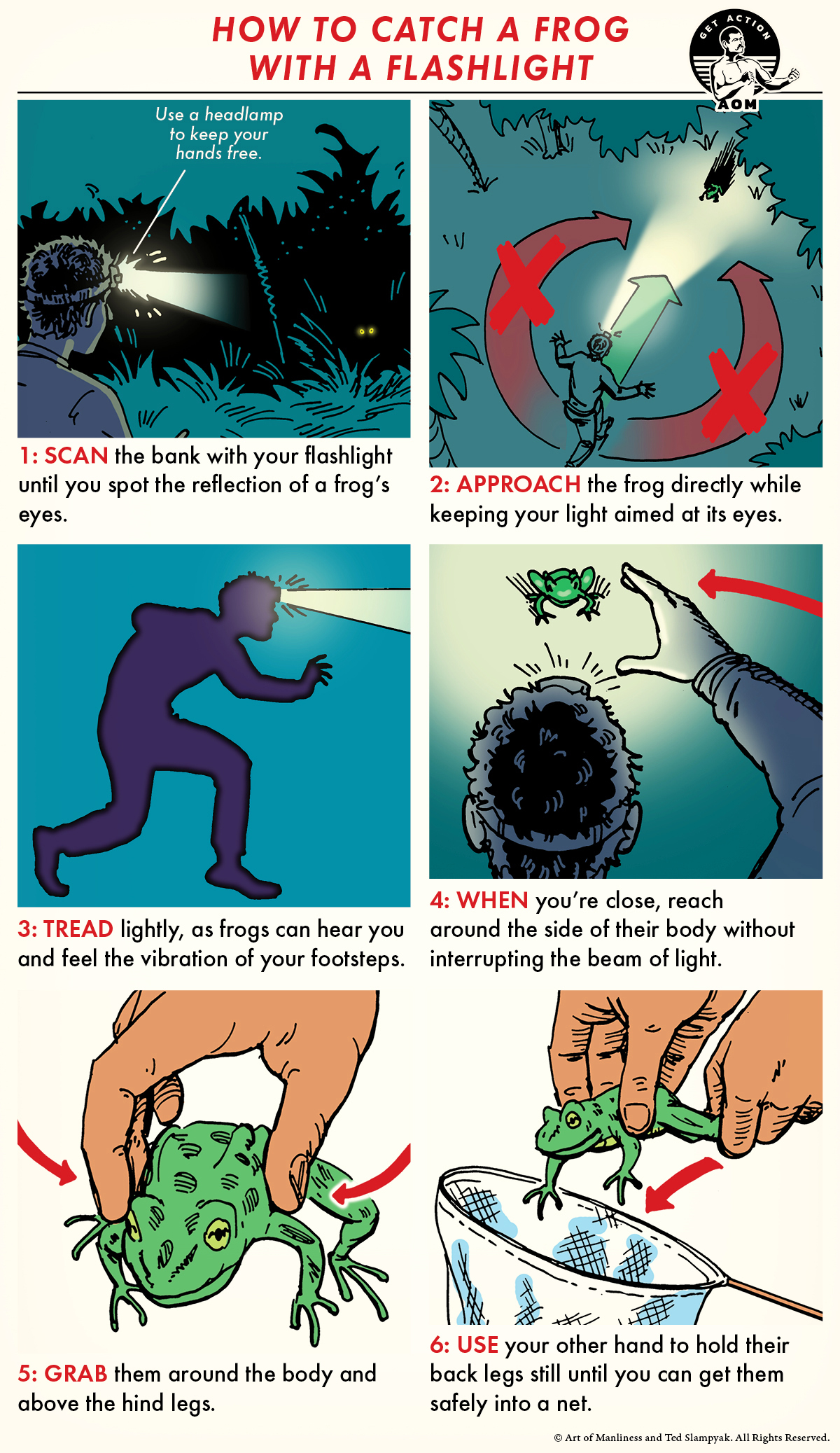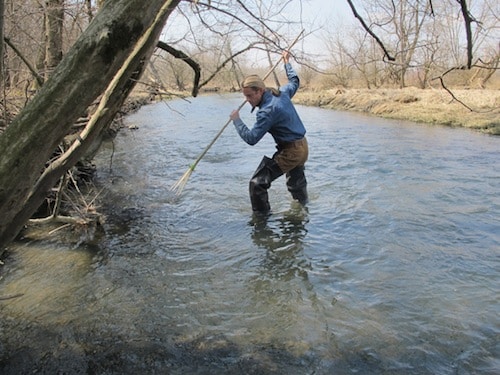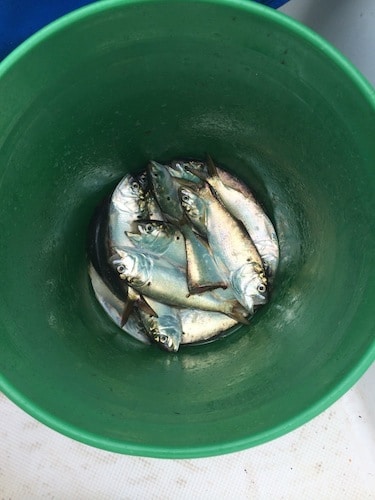
An important part of manhood has always been about having the competence to be effective in the world — having the breadth of skills, the savoir-faire, to handle any situation you find yourself in. With that in mind, each Sunday we’ll be republishing one of the illustrated guides from our archives, so you can hone your manly know-how week by week.
For hunters who like to go after smaller game, frogs represent a prized delicacy. Their legs, served up simply with garlic and butter, or battered and fried, are found on the menus of fancy French restaurants and Southern diners alike. But, they’re probably far more common in the cast iron skillets of those who know the secret to catching them in their own backyard.
Frog season generally runs from late spring into the end of summer, when frogs mate. You might see frogs during the day, but they typically hide until it’s dark. Their nocturnal nature would seem to make it harder to catch them, but it’s actually an advantage. When frogs encounter bright lights, they freeze up. So the same flashlight that makes it possible for you to find frogs in the first place also holds them still while you make your move to catch and even spear them.
To find frogs, look on the weedy banks of rivers, ponds, and lakes. They typically hang out in muddy, grassy areas near water. As with any foraging or hunting activity, make sure you understand which frogs are safe to eat before you go out. As a general rule, bullfrogs and leopard frogs are what people typically go after, but your area might be home to another type of edible frog. Avoid any frogs that are blue, red, yellow, orange, or brightly colored in some way. If you’re not sure, best to leave a frog and move on rather than catch it and get sick later.
Like this illustrated guide? Then you’re going to love our book The Illustrated Art of Manliness! Pick up a copy on Amazon.







